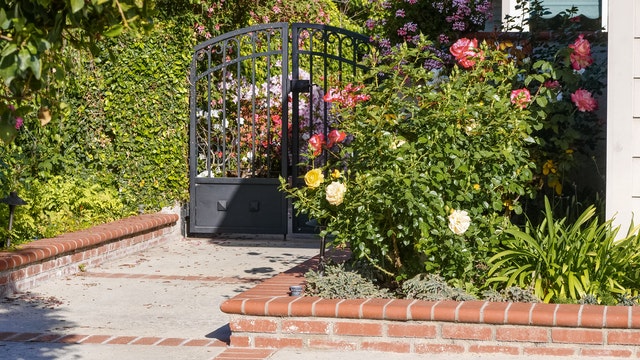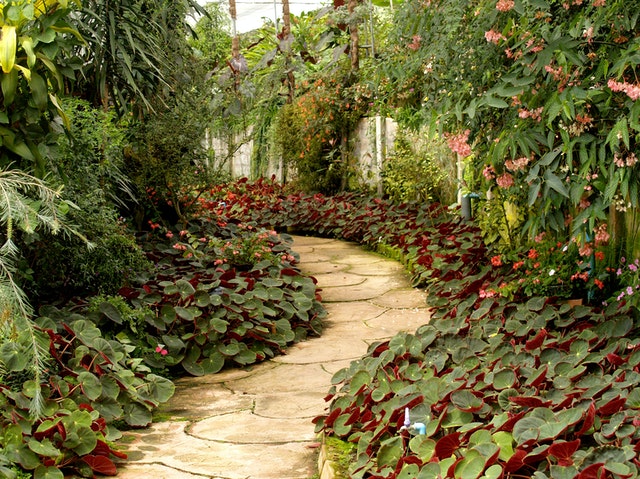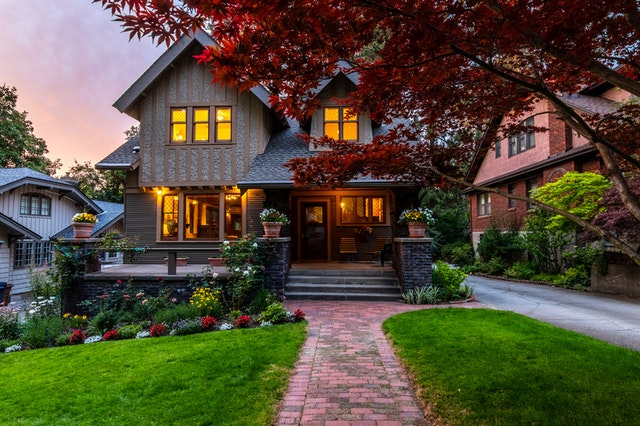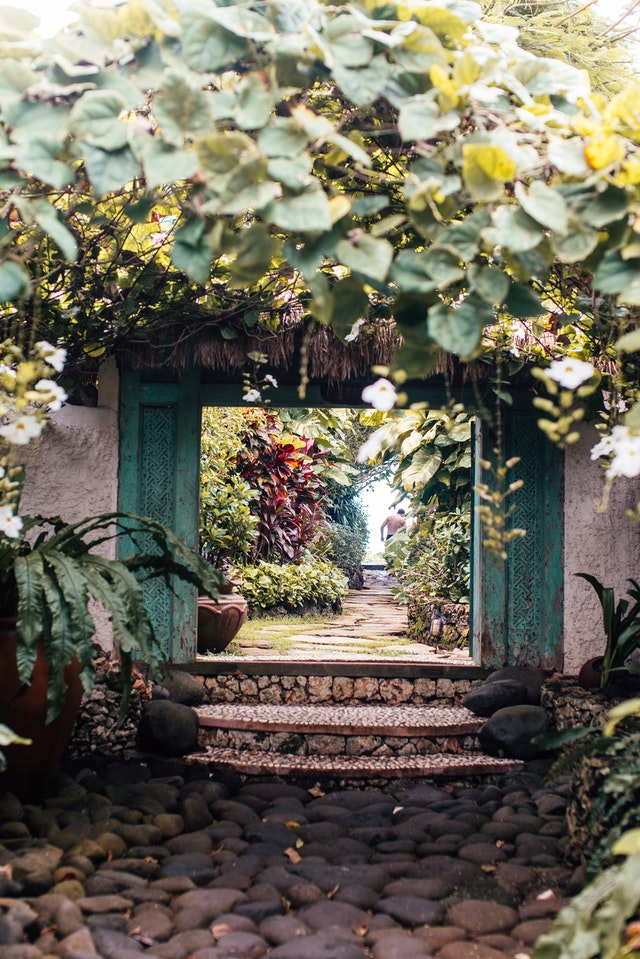Using Texture And Color
When choosing colors and textures, take note of-and try to blend with-those used in the house and other features. In country gardens, you may also wish to consider the surrounding landscape. The synthetic tints of brightly colored paving look unnatural in rural areas and seldom blend well with materials used in older properties. Here, recycled materials with an aged appearance may look best. But in modern urban gardens, bright colors combine well with painted walls, stylish ceramics, or furniture. In general, though, more subtle textural contrasts, using the natural palette of warm browns, cool grays, and terracotta, are easiest to place.
Wood is particularly versatile: it can be stained in natural or bright colors and, in itself, provides a variety of textures, from rough-hewn to smooth and planed. Use color and textural contrasts to define path or patio edges, to enliven large areas of paving, or simply to add interest to areas designated for seating.
Brightly colored materials can work well in urban gardens
Choosing Materials
In most cases, good results are achieved by using materials that already exist on your property. The color and fabric of the house will probably be the main influence on your choice of paving material. For a brick house, for example, paving edged with or made from brick or terracotta tiles would suit. Similarly, aged brick and mellow wood complement the honey tones of sandstone.
If your area is to include wooden features such as a summerhouse or pergola, wooden decking may be an appropriate choice.
A rock garden may dictate the color of nearby stone path-materials from the same local source will usually blend perfectly.
Display maritime plants next to a path of sea-washed pebbles
Mimicking Nature
Creators of gardens have long sought inspiration from the natural world and, for many gardeners, natural effects are still the most prized. A path that mimics a dried-up river bed, studded with colonizing plants, is not only a route though the garden but an opportunity to grow a greater diversity of plants. Crushed slate or gravel resembles a mountain scree and makes an ideal home for alpine plants, while sea-washed pebbles make a perfect foil for maritime plants, such as sea lavender or thrift. In coastal gardens, crushed shells make a good, crunchy path if laid like gravel.
Wood is a natural choice for a woodland setting, and slabs of tree trunk, set among bark chips, look perfectly appropriate. Railroad ties are ideal for constructing long-lasting paths and are very effective if set in bark or gravel and interplanted with species native to the woodland floor.
Abstract Design
Small, modern plots lend themselves well to experiments with abstract designs; here, you might seek inspiration from the works of modern artists. A geometric hard-edged layout of different materials can form a framework for plants to create a living patchwork of color. Here, caution can be thrown to the wind; mundane paving can be set beside materials of bright color with the spaces between filled with plants and gravel. Areas of the patchwork can be made into smaller individual compositions, with planting that coordinates with the paving materials. A checkered pattern of slabs and soil is a popular way to grow herbs, alpines, and bulbs, allowing the plants to grow through gravel or chips. Dividing up an area into smaller units often means that you can eke out relatively costly materials over a fairly large area without breaking the bank. In small areas, you can be as creative as you like; expensive materials such as glass beads or polished pebbles can be placed alongside contrasting evergreen plants, or broken ceramic tiles can be used to create picture mosaics or elaborate designs. And do not underestimate the value of reclaimed, recycled, or found objects, for their use can often put a highly individual mark on your designs. Wood, whether new or reclaimed, can be painted or stained to add an extra dimension and interesting textures in the garden
Throw caution to the wind and offset mundane paving with bright color
Reclaimed Materials
Old railroad ties, which are impregnated with creosote, make a long-lasting material for imaginative paths. As with other reclaimed materials, they come ready-aged and mellow.
A river of slate
Japanese and Chinese garden-makers take inspiration from, and echo, the natural world. Here, a ribbon of crushed slate suggests a babbling brook in contrast to the limpid water contained within the tsukubai,
Inspiration
- Visit friend’s gardens and those open to the public armed with a notebook. jot down any exciting used of materials that catch your eye. Modify them to make them your own.
- Supply stores and salvage yards may get you buzzing with ideas, and don’t overlook plumbing items-utilitarian copper pieces acquire an attractive verdigris with age.
- Magazines and books on gardening are rich sources of visual stimulation, but so too are those concerned with interior design.
- Look to nature: the seashore, the forest floor, mountain screes, and water margins all hold inspiration for the observant gardener.
Finishing Touches
The edging and plants around a path can greatly enhance its appearance. Edging prevents loose material from spreading into flower beds; low, creeping plants disguise harsh edges and bring a natural look to new paths. To help increase the impression of width, keep plants that overhang main paths to no higher than shoulder height. To accentuate a formal look, choose a low plant, such as lavender or santolina, and grow it along both sides or at regular intervals.





